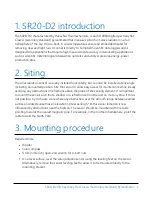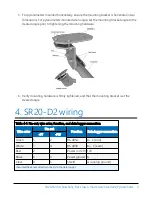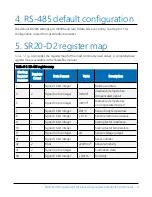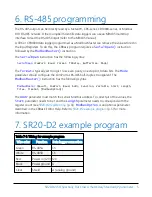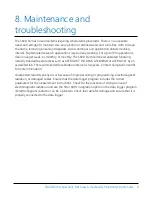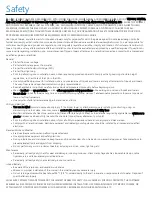
1. SR20-D2 introduction
The SR20-D2, manufactured by Hukseflux Thermal Sensors, is an ISO 9060 digital spectrally flat
Class A (secondary standard) pyranometer that measures solar short-wave radiation in a full
hemisphere of the sky. It has a built-in case-temperature sensor and embedded heater for
removing dew and light rain. It connects directly to Campbell Scientific data loggers and is
designed for applications that require high measurement accuracy in demanding applications
such as scientific meteorological observation networks and utility scale solar-energy-power
production sites.
2. Siting
The solar radiation sensor is usually installed horizontally, but can also be installed at any angle
including an inverted position. Site the sensor to allow easy access for maintenance while ideally
avoiding any obstructions or reflections above the plane of the sensing element. It is important
to mount the sensor such that a shadow or a reflection will not be cast on it at any time. If this is
not possible, try to choose a site where any obstruction over the azimuth range between earliest
sunrise and latest sunset has an elevation not exceeding 5°. Diffuse solar radiation is less
influenced by obstructions near the horizon. The sensor should be mounted with the cable
pointing towards the nearest magnetic pole. For example, in the northern hemisphere, point the
cable toward the North Pole.
3. Mounting procedure
Required tools:
l
Diopter
l
Solar compass
l
8 mm (5/16-inch) open-end wrench for U-bolt nuts
1. On a level surface, level the solar radiation sensor using the leveling feet on the sensor.
Alternatively, remove the sensor leveling feet to allow it to be mounted directly to the
mounting bracket.
SR20-D2 ISO Spectrally Flat Class A (Secondary Standard) Pyranometer
1



